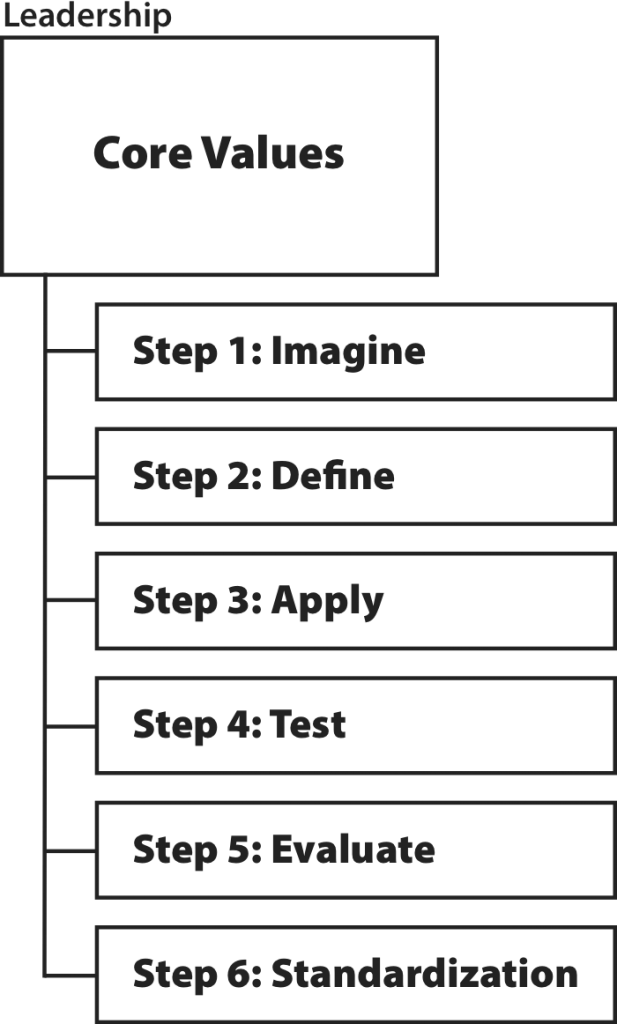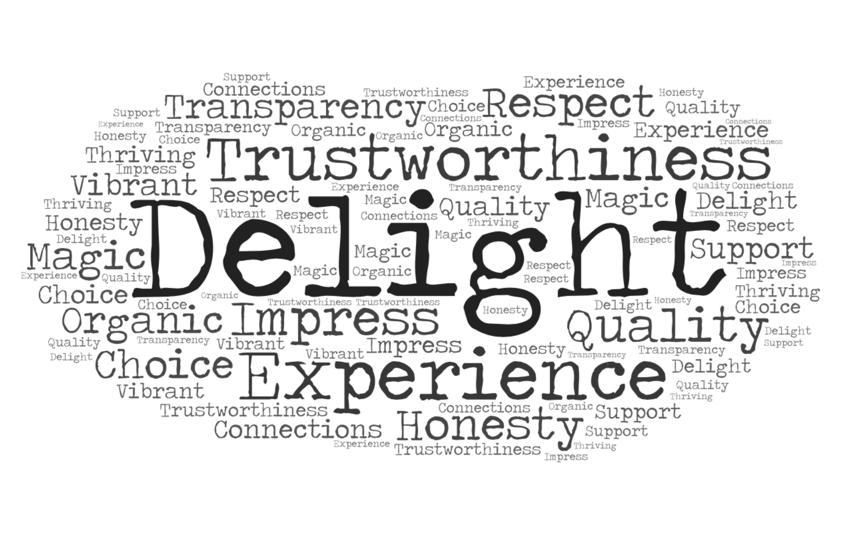
Defining our Core Values
I wrote recently about hiring Kim for Tech Leadership Coaching. For this post I thought I’d start diving into the details of what we’ve been working on.
Kim’s coaching is structured around three pillars for building inclusive organisations:

We start at the beginning and at the top with Core Values for which Kim has developed a 6-step process:

“It’s shit”
Prior to starting this process, there was an internal communication problem.
All too often, “it’s shit” would be Paul’s feedback to something I designed or wrote. I’ve done the same to him. But over the years, we’ve learned to work well together and not take (too much) offence at such statements. We’d eventually work through it and end up with something everyone was happy with.
It took nearly 5 years to get to that level of understanding though. For a growing team, that just wouldn’t be sustainable.
Core Values
When I heard “Core Values” I used to think of those posters pinned up on a wall somewhere that a bunch of corporate suits had dreamed up to inspire an uninspired workforce. Platitudes.
“We don’t need that kind of thing. We’re small. Everyone gets what we’re trying to do with Tito. It’s a waste of time.”
Wrong. Our Core Values and associated Commitment Statement have been a bit of a revelation for me, to be honest. While we had got this far with a tacit understanding of our sense of who we were as a company, we’d never taken the time to sit down and write these things down.
And because of that, we weren’t able to communicate it to the rest of the team, to our customers and to the outside world.
If you‘d forced me to say something out loud, I probably would have said something along the lines of “Tito is a company that wants to do the right thing on its own terms”.
That’s not a Core Value, that’s a statement with a bunch of words that are open to interpretation. Don’t be evil, right?
Work On The Business, and Not In The Business
As we started working with Kim, one of the things she quickly and correctly identified was that we as founders, were spending most, if not all, of our time working on Tito the product, and not Tito the business.
I don’t think this is unusual. Particularly during the early days of a company and even more so when you’re struggling to keep the lights on. Your company is your product… or at least that’s what it felt like to me.
But with these blinkers on it’s really easy for important things to take a backseat. You’re in the trees and the forest is nowhere to be seen… and that always leads to trouble.
And if I’m being honest it’s really hard to pull yourself away. To move out of the bug-fixing, fire-extinguishing, rewriting, oh-so-comfortable product todo list. To start thinking about grown-up, businessy things.
And that’s where having someone like Kim as a coach has been incredibly helpful. It forces you to make time for the important stuff you’re not prioritising.
Step 1: Imagine
Kim has done this before. She’s seen founders and leaders struggle to articulate something that they understood and assumed would be understood by others. So she has a system, a process for teasing out what it is you are trying to communicate.
Your assignment for today is to take some time to imagine what the ideal customer/client experience for your product/service looks like, write it down in detail.
You should be thinking about any and all steps in the process that will let you know that your customers are happy.
Both Paul and I were asked to go off and write our own versions to discuss and compare at the next meeting. We both failed at the first hurdle. Kim laughed, that was normal. We discussed the details, and each came back to the next meeting with a block of text.
Kim then highlighted words and phrases that might hint at our values. Here are some of those words in a classic internet visualisation:

“Delight” was something that we’d both added. And in fact at a team gathering earlier in the year we had put together a company strapline “Bringing delight to events”. Yet Kim correctly pointed out that we should have done something with that. We should have defined it, and made sure everyone’s understanding of delight was the same. It was effectively useless in its current state.
That said, we did have our first Core Value “Delight” and from the list above we discussed and distilled and teased out two more: “integrity” and “excellence”.
We were then able to construct our Commitment Statement:
To provide delightful experiences to our customers, based on strong ethical values and a commitment to excellence.
Why?
During the discussions Kim kept having to remind us that this wasn’t about Tito the product, it was about customer/client/employee experience. But why are we doing this?
By having a clear and agreed set of values you can start to measure. The next stage is to attach indicators and metrics for gaining insight but even without having started this step we have already started using our Core Values day-to-day.
Does this potential business partner adhere to our level of excellence? Will this microcopy delight our customers? Does this data table have referential integrity? (Okay, not the last one, that was a little RDBMS joke. Sorry.) But you get the idea, we can immediately put our Core Values to work.
When I said that having these Values was a bit of a revelation, it wasn’t hyperbole. They really have had a serious impact on our day-to-day work. And we’re only on Step 2.
Now, when anyone in the team has work for review instead of “it’s shit” we can start from “let’s look at how this holds up against our core values”. It’s a much better place to start.